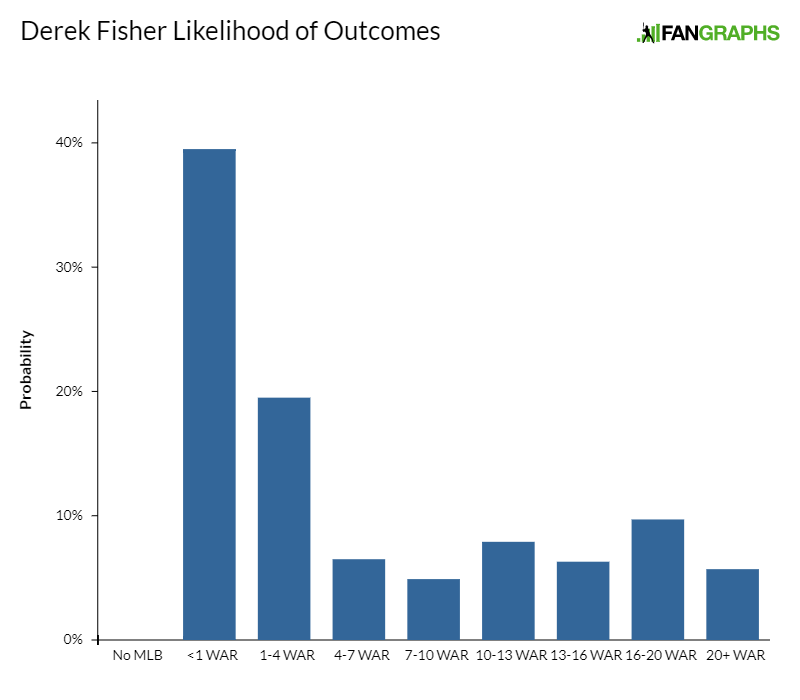What Might Chris Taylor Have Become?
On this date a year ago, the Dodgers traded pitcher Zach Lee for non-pitcher Chris Taylor. Since then, Lee has been claimed off waivers, and he’s thrown eight big-league innings, with eight walks. Taylor, meanwhile, didn’t impress in the majors in 2016, but he made some offseason changes and currently ranks third among Dodgers position players in 2017 WAR, behind only Justin Turner and Corey Seager. Cody Bellinger has been very good, yes? He’s at 1.8 WAR, with a 144 wRC+. Taylor’s at 1.9 WAR, with a 140 wRC+. He’s appeared at second base, shortstop, third base, left field, and center field.
I’m not here to give Taylor an exhaustive look. I’m not going to do any video breakdowns. This is pure statistics. Let’s begin with a table featuring one statistic. For every hitter who’s batted at least 150 times this season, I calculated the difference between their in-zone swing rates and their out-of-zone swing rates. There have been more than 250 such hitters. A leaderboard:
| Player | O-Swing% | Z-Swing% | Z – O% |
|---|---|---|---|
| Chris Taylor | 19.3% | 69.9% | 50.6% |
| Freddie Freeman | 30.5% | 80.1% | 49.6% |
| Joey Votto | 20.6% | 69.8% | 49.2% |
| George Springer | 23.4% | 70.8% | 47.4% |
| Andrew McCutchen | 19.3% | 66.6% | 47.3% |
| Miguel Sano | 25.6% | 72.9% | 47.3% |
| John Jaso | 22.0% | 68.1% | 46.1% |
| Jorge Bonifacio | 33.7% | 79.3% | 45.6% |
| Chris Carter | 25.8% | 71.4% | 45.6% |
| Kris Bryant | 26.4% | 71.5% | 45.1% |
That’s Chris Taylor in first place. That’s Chris Taylor in first place in a table that also has Joey Votto in it. Taylor, to this point, has been making many of the right swing decisions, being aggressive within the zone while laying off garbage outside of it. That’s not everything about being a good hitter, but you couldn’t ask for a better foundation. Taylor has made himself difficult to pitch to.
Now to expand. This is going to be another somewhat experimental table, a form of analysis I’ve done a few times before. I just finished writing an article for ESPN, in which I performed this same analysis for Cody Bellinger. I identified, for hitters, four core traits — discipline, contact, exit velocity, and launch angle. I gathered data for every hitter going back to 2015, when Statcast was introduced, and I looked for the closest comps to 2017 Chris Taylor. There were no extremely close comps. But among the comps that were there, one comp was far stronger, far closer than the others. The name and the stats:
| Player | Z – O-Swing% | Contact% | Exit Velo | Launch Angle | wRC+ |
|---|---|---|---|---|---|
| 2017 Chris Taylor | 50.6% | 76.5% | 88.9 | 8.1 | 140 |
| 2015-2017 George Springer | 47.2% | 72.8% | 89.4 | 8.3 | 130 |
For the new Chris Taylor, at the plate, easily the closest comp has been recent George Springer. They’re close up there in all four categories, and while Springer has shown the slightly better peak strength, Taylor has made more consistent contact. So, when you wonder how Taylor’s wRC+ might regress, you might decide to be strongly anchored to Springer’s 130. Perhaps that’s still too high, I don’t know, but Taylor has been showing legitimate offensive skills, and his defensive versatility is an obvious plus. Pitchers will have time to try to figure this out, but Taylor hasn’t given an inch.
Without question, Bellinger has come in handy for the Dodgers at just the right time. But Taylor, too, has been crucial to the Dodgers’ early success, and this is just another testament to the organization’s depth. Taylor always seemed like someone who could play a little bit. Now he’s resembling a critical component of the Astros’ organizational core.
Update: And, to pile on, earlier today, the Padres designated Zach Lee for assignment.


